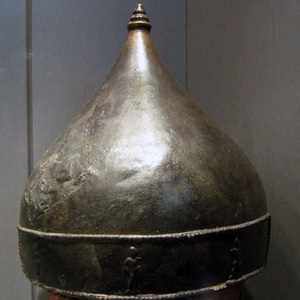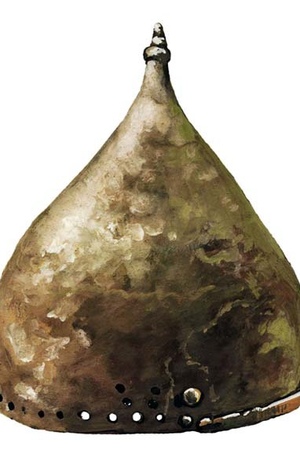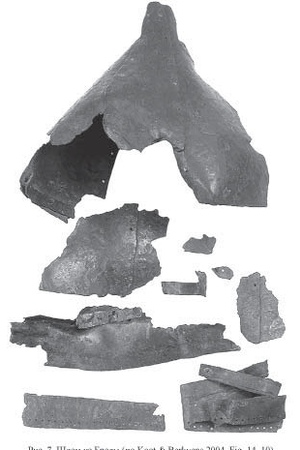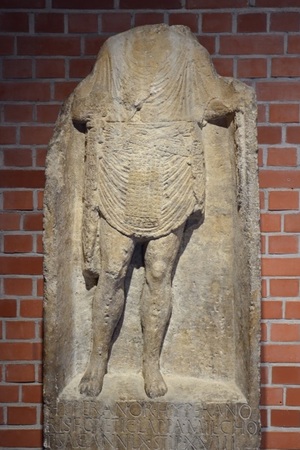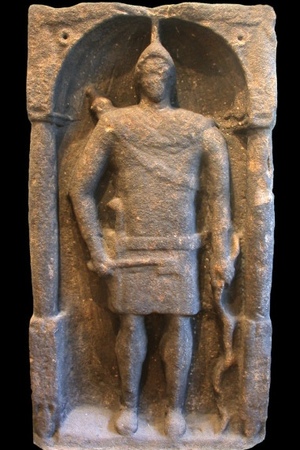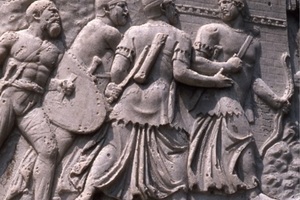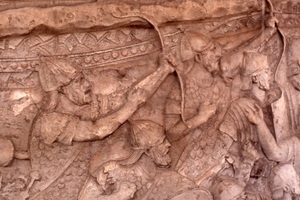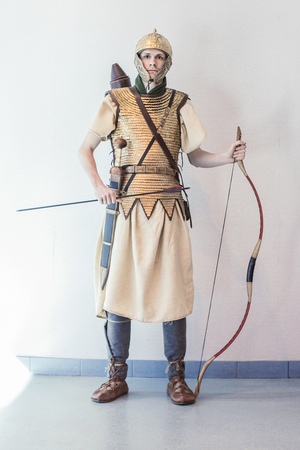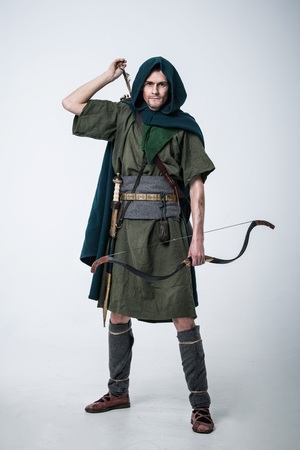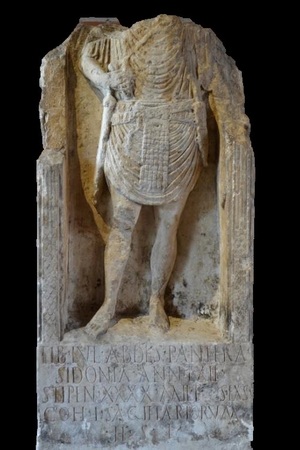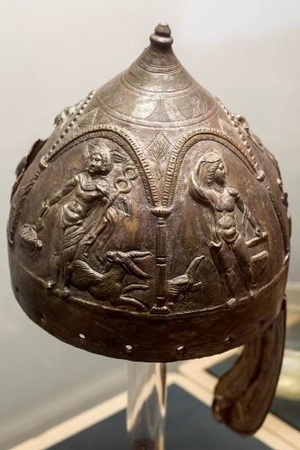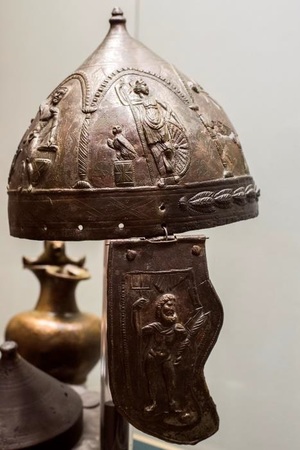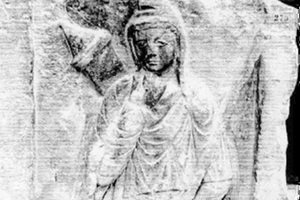Sagittarius
The term "sagittarius" (Latin: sagittarius) was the general designation for archers in ancient Rome. In the Roman army, sagittarii could be employed within the auxiliary units, as Roman citizens themselves typically did not serve as archers, instead traditionally serving as legionnaires in the army.
The name "sagittarius" comes from the Latin word arrow, meaning arrow. Thus, the literal translation of sagittarius is archer. This term could also refer not only to auxiliary archers but to other types of archers, such as enemy archers, hunter-archers, and even gladiator-archers. From the name itself, it is evident that the term is linked to the weapon rather than the social role of the warrior.
Written records about the sagittarii are scarce, and there is no clear description of their equipment beyond the bow, which was their primary weapon. However, there are no specific details about the materials and construction of these bows, nor whether they differed when used for military purposes versus hunting. Archaeological finds are also minimal. Fortunately, a large number of visual sources depicting auxiliary sagittarii have been preserved, the most famous being Trajan's Column. Numerous tombstones of auxiliary archers from shooting and mixed cohorts have also been found.
It is presumed that sagittarii used lorica hamata and lorica squamata armor and might have also been without armor. They did not use shields. The most distinctive item of their equipment was the elongated helmets of the Auxiliary Infantry D type, classified by R. Robinson. To date, only two such helmets have been found, both decorated with Roman-themed embossing and made of bronze. The first is a conical helmet discovered on a mountain near the ancient city of Anchialus (Bulgaria), richly adorned with images of Mars, Apollo, Minerva, Mercury, and Victoria. Neptune is depicted on the cheekpieces. The helmet's dimensions are: diameter 210 mm, height 197 mm, width 167 mm. The second helmet, also decorated with images of gods, was found in Đakovo, Croatia, and dates to the 2nd century AD. It is 205 mm high, with the rear edge 20 mm lower than the front. An additional nape guard was attached to this strip. On the forehead plate are embossed figures of Victoria, Jupiter, and Mars. The cheekpieces' hinges are riveted from the inside. Another distinguishing feature of these helmets is the remnants of a mail aventail—a scale protection for the neck attached to the helmet, which corresponds with visual sources. These helmets were used in the Roman army roughly from 50 BC to 170 AD.
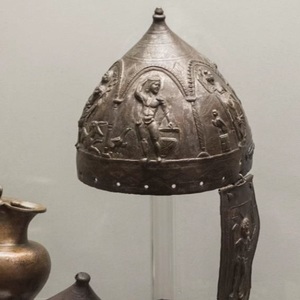 Helmet of the Auxiliary Infantry D type. Karagacha, Bulgaria. Preserved in Sofia, Archaeological Museum. Late 1st century AD.
Helmet of the Auxiliary Infantry D type. Karagacha, Bulgaria. Preserved in Sofia, Archaeological Museum. Late 1st century AD.According to visual sources, this type of helmet with an elongated dome is well-suited for sagittarii equipment, who are always depicted with such helmets, differing in shape from classical Roman ones. Interestingly, a similar helmet shape is also found among gladiator-sagittarii.
Another example of this type of helmet is the one from Intercisa. The helmet, stored in the Dunaújváros Museum, was retrieved from the Danube during dredging works near the Roman auxiliary camp Intercisa. The bronze sheet from which the helmet was made was torn in several places, with the lower part of the nape area missing. The helmet's dimensions are: height 23 cm; diameter 24 cm; wall thickness 1–2 mm. Inside the helmet, hammer marks are visible. The outer surface was polished after completion to remove tool marks. A small ring fragment, likely part of a chain mail aventail, remains in a hole on the helmet's lower edge.
A unique piece in this helmet group is the helmet found in Breda. It was discovered in a well containing materials from the 3rd century AD. The helmet dome consisted of eight elongated triangular plates 22 cm long and 1 mm thick, riveted together with copper rivets. Along the lower edge was a wide rim overlapping the plates. The lower edge of the rim had a row of small holes, possibly for attaching padding or an aventail. This helmet type was atypical for the western regions of the Roman Empire and was likely brought back by a veteran from the eastern provinces. According to the found materials, this soldier was a regular auxiliary, as there were no high-status items in the settlement (Roymans N., Derks T., 2011. P. 153). This is an example of the composite helmets depicted on Trajan's Column, well-known to the Sarmatians of the Northern Black Sea region and directly to the Bosporus.
As a backup weapon, sagittarii used a gladius or pugio, which they employed either when they ran out of arrows or if the enemy managed to engage them in close combat. Despite having armor and a sword, the lack of a shield made sagittarii quite vulnerable in melee combat, so they aimed to defeat the enemy before close quarters combat ensued.
Sagittarii were most often recruited into the Roman army from the eastern provinces, leading to the stereotypical term "Syrian archer," although they did not exclusively come from the Syrian province.
Sagittarii also referred to a type of gladiator armed with a bow. It is assumed that these sagittarii fought either in mass performances or engaged in archery duels for the audience's entertainment.
 Gravestone of Monimus, a soldier from Cohors I Ituraeorum, who served for 16 years and died in 50. 1st century AD.
Gravestone of Monimus, a soldier from Cohors I Ituraeorum, who served for 16 years and died in 50. 1st century AD.Equipment
The equipment of an auxiliary spearman in the 1st-2nd centuries AD could consist of the following elements:
Cloth/Leather Items:
Protective equipment items based on metal:
Shooting weapons items:
- Protective bracer for archery
Additional elements:
Reconstruction
It is best to approach the reconstruction of a sagittarius with a natural love for archery. The minimum kit is the same as that of a legionary and auxiliary spearman: a wool tunic in green, blue, gray, red, or uncolored shades, a cingulum (which can be either with or without suspenders), and footwear. After this, you should obtain the primary item for any sagittarius—a short composite bow. It makes sense to have two sets of arrows—one for practice in the archery range and another for combat with blunt tips. Next, you should acquire other archery equipment: a protective bracer for the bow hand, a quiver, and an archery ring if using a ring grip. Only after this should you consider items such as a helmet, armor, and sword. Remember, the main point of a sagittarius reconstruction is archery, and it is recommended primarily for those who enjoy archery or the aesthetics of archers. We recommend reading the article on archery techniques.
Related topics
Legion, Bow, Quiver, Auxiliaries, Auxilary-hastat, Sagittarius-Gladiator, Arrows
Literature
Auxilia Moesiae Superioris.pdf
The composite bow - Mike Loades.pdf
Arrows of Ancient and Medieval Cultures of Eurasia-Kishchenko In pdf
Armament of the nomads of Gorny Altai of the Xiongnu period Khudyakov Yu S pdf
Composite bows from the UCH Kurbu monument in Kyrgyzstan-Khudyakov Yu. S. pdf

 Gallery
Gallery







